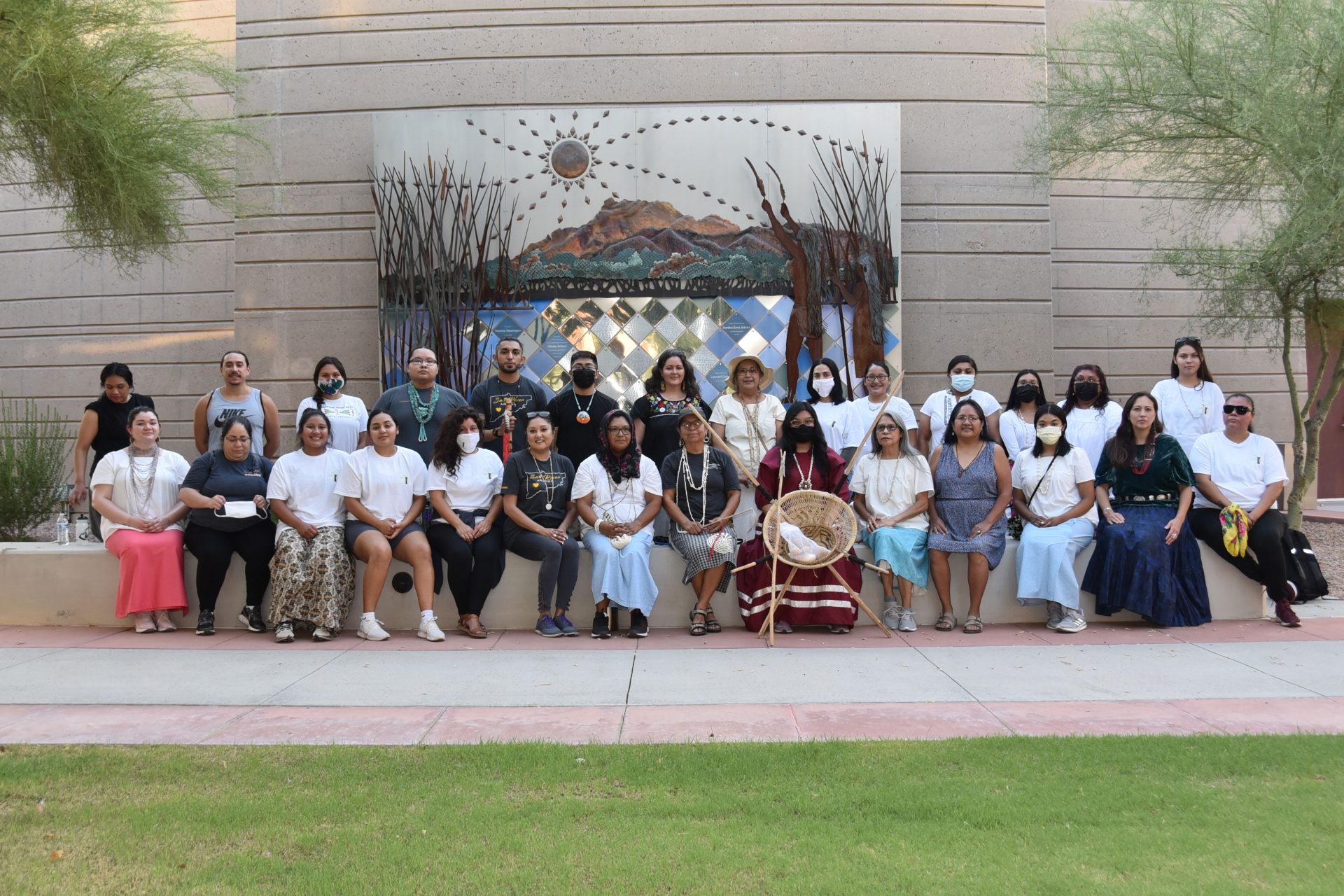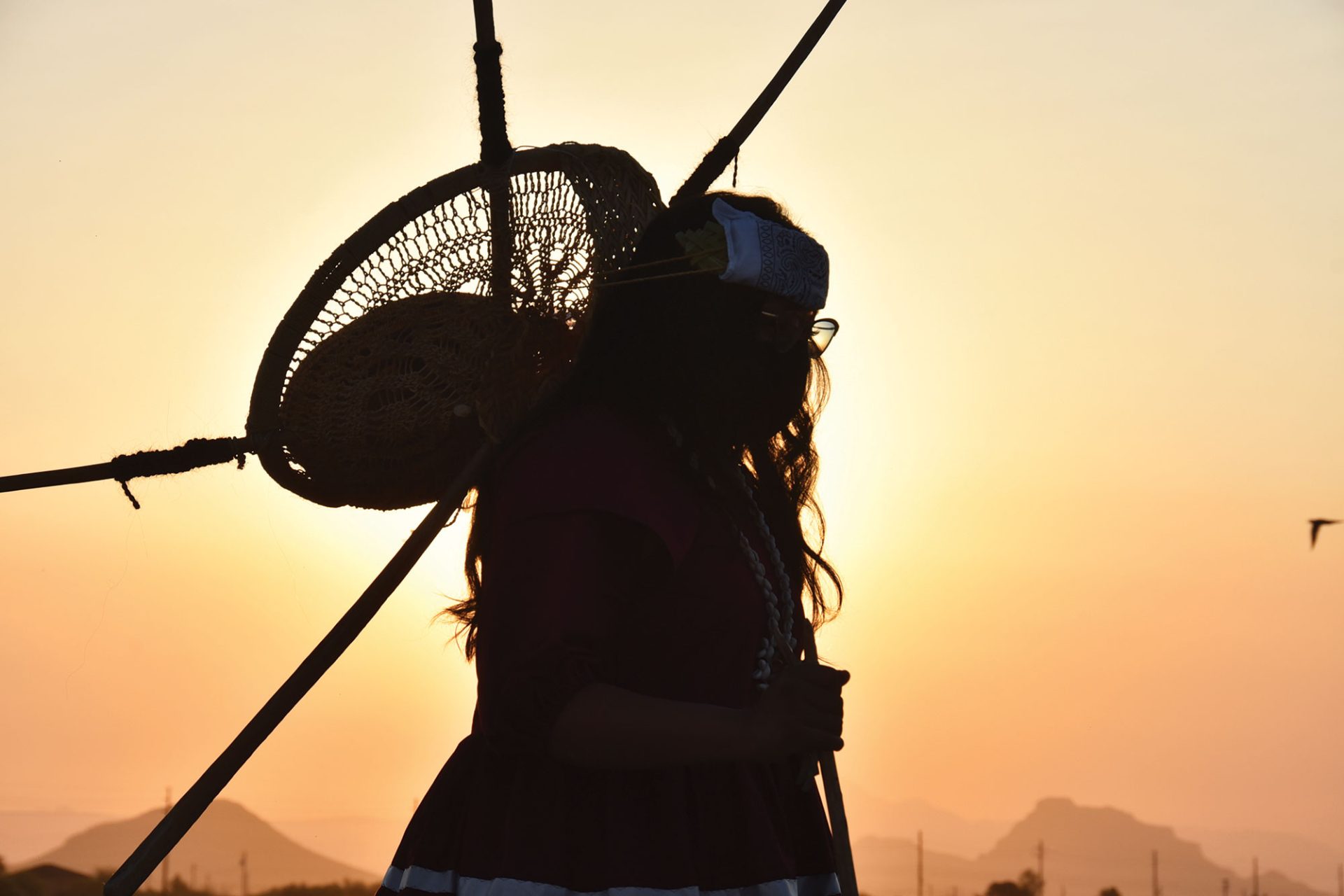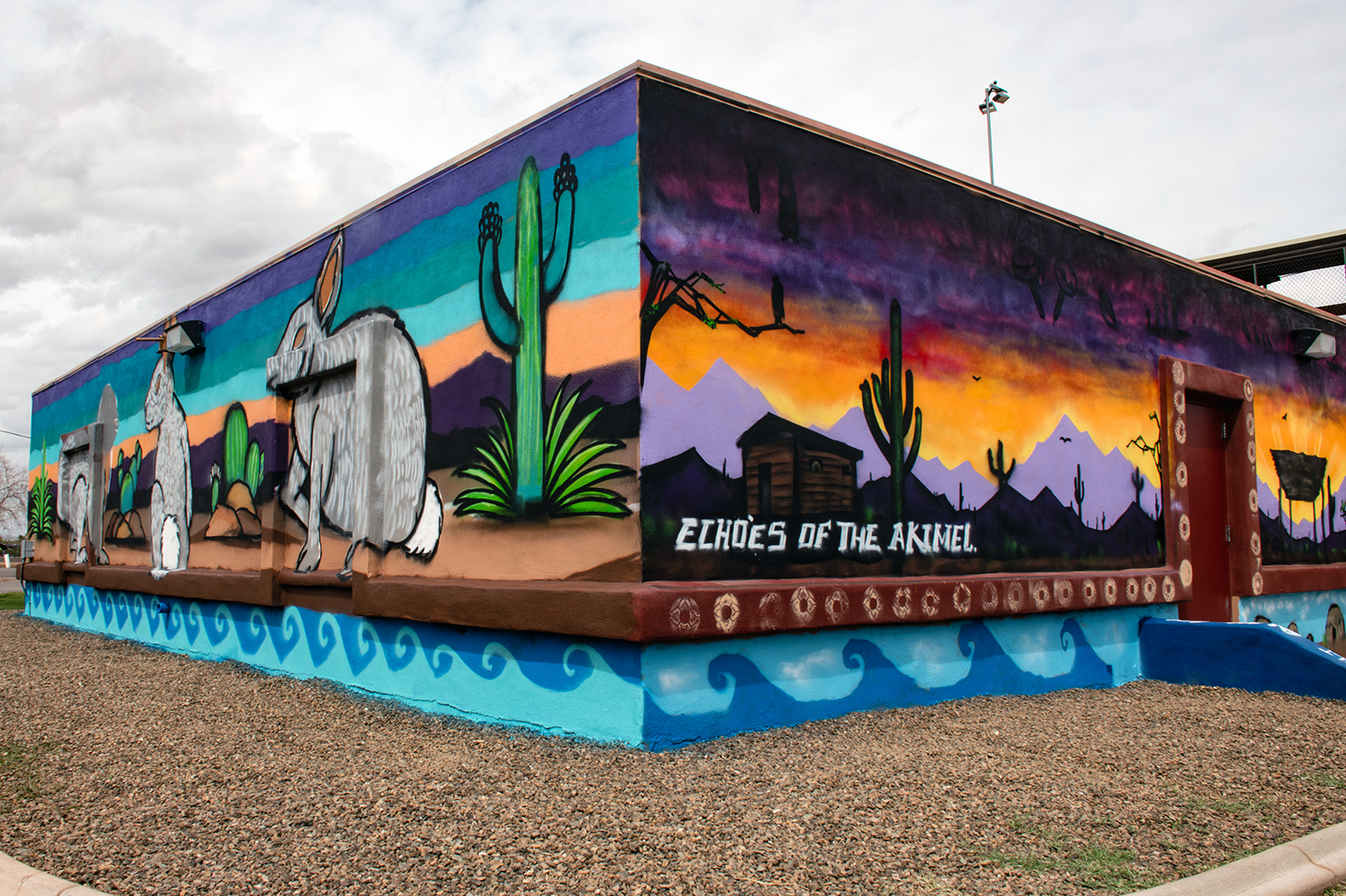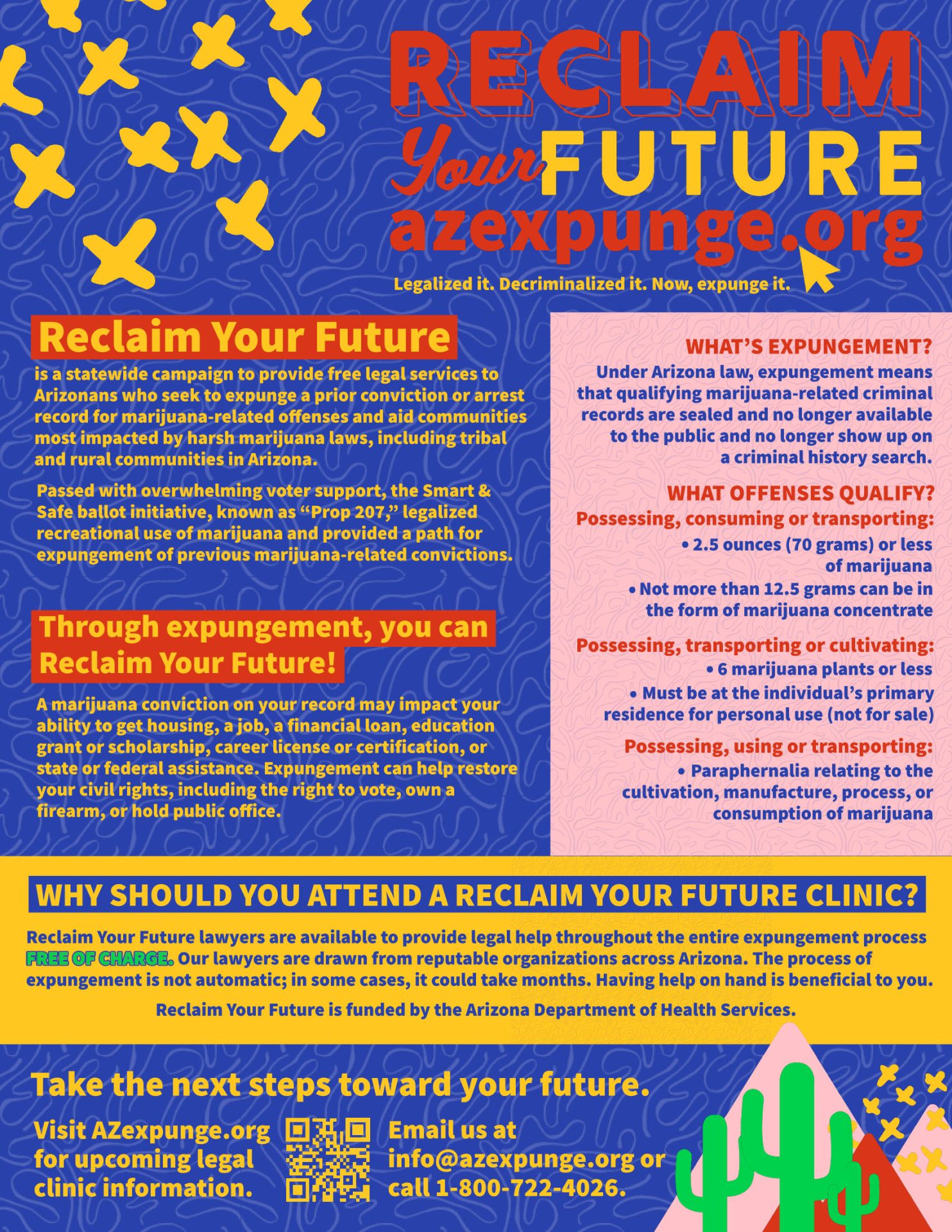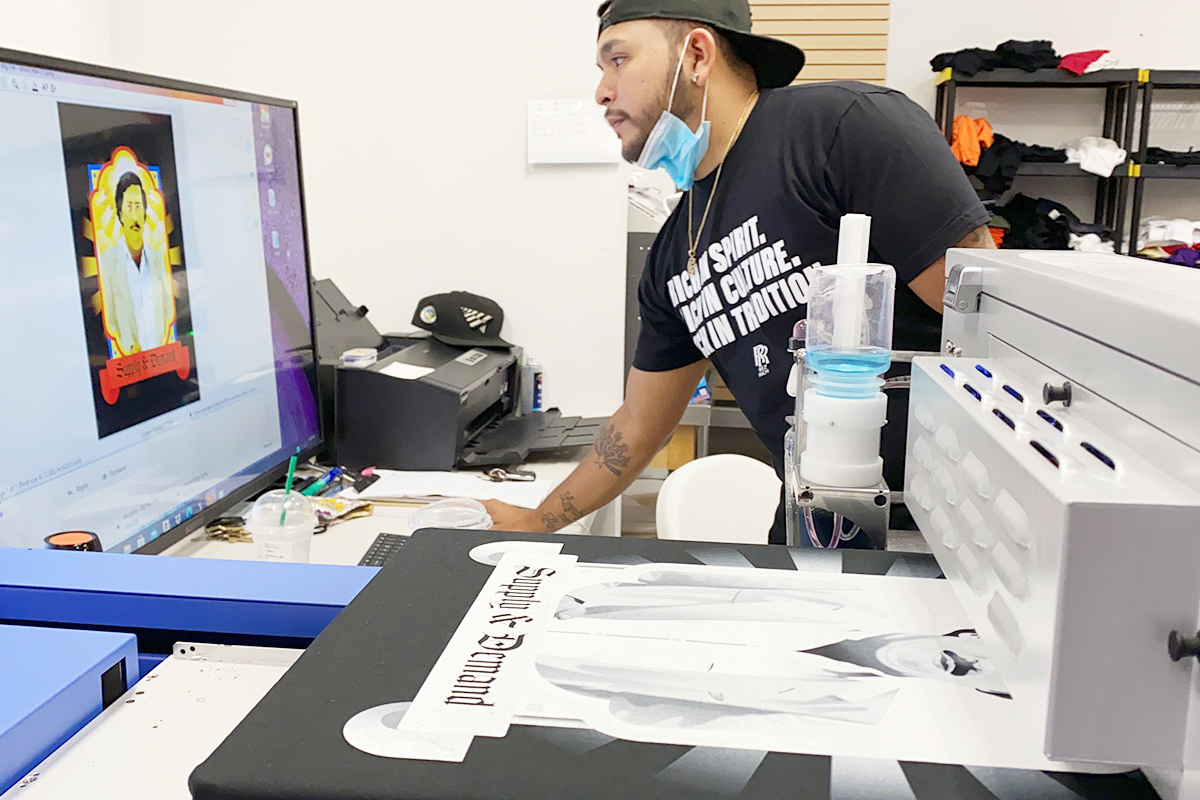VIEWS: 3981
July 12, 2021Historic Kia-Ha Burden Basket Walk Keeps Tradition Alive

At 4 a.m. on June 21, before the sun came up over the horizon, a group of Salt River Pima-Maricopa Indian Community members began to quietly fill the front yard of Royce Manuel and Debbie Nez Manuel.
The group was about to be part of something special and rare that had not happened in the Community for more than 100 years: the Kia-ha (burden basket) Walk.
The Kia-ha for this event was made by Royce Manuel, whose health recently began to decline after he was diagnosed with stage 4 pancreatic cancer. Leading up to the walk, Royce grew weaker, but it was set that rain or shine, this walk was going to happen. A week before the walk, Royce told Debbie that he was worried he wouldn’t make it to the walk. “He didn’t make the walk,” said Debbie. But the Community carried on with the walk while Royce stayed in hospice care.
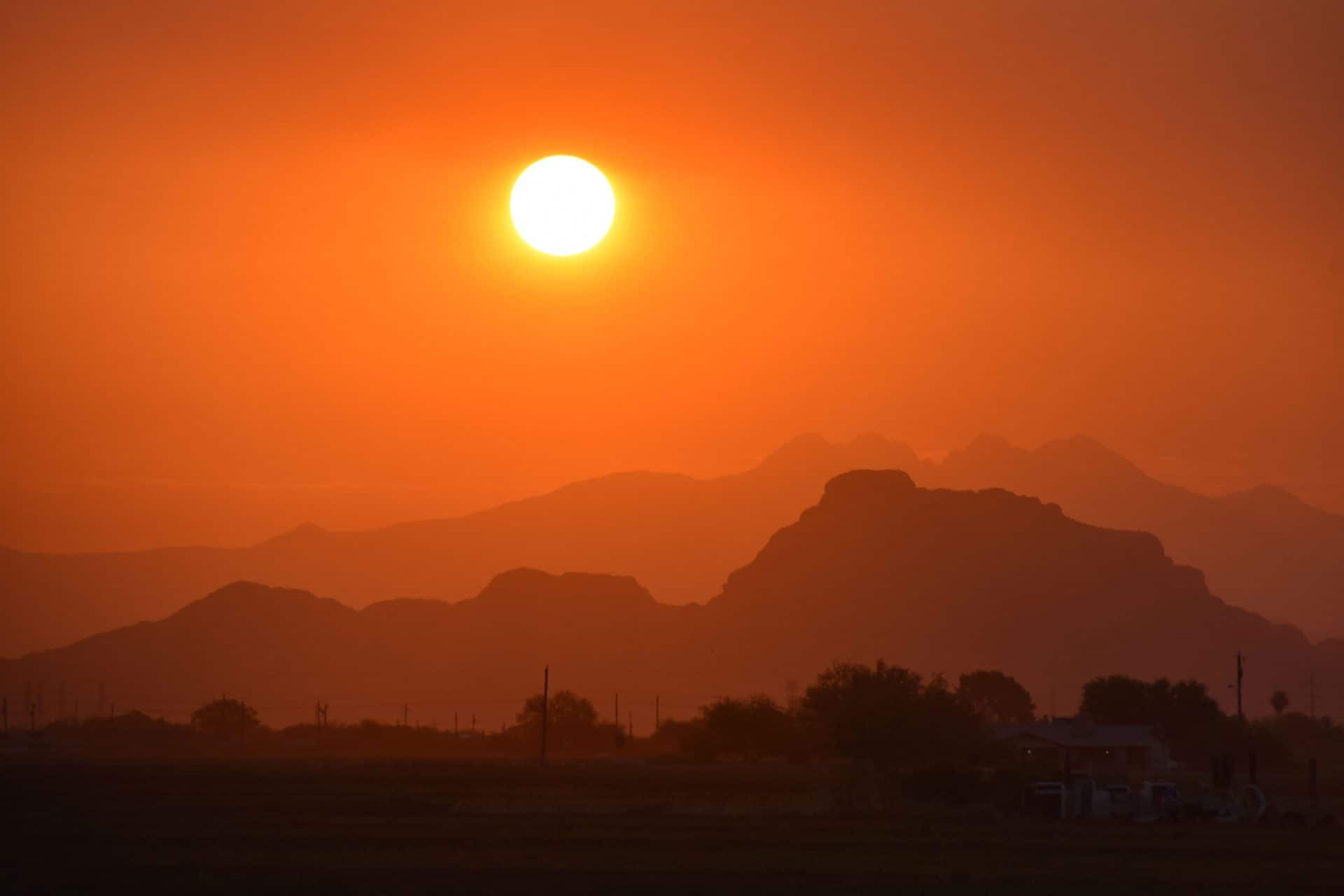
At 4:30 a.m., SRPMIC member Marissa Johnson placed the Kia-ha on her back, propped up with a head strap on her forehead, as close to 40 participants gathered for prayer before making the historic journey on foot from the Community to downtown Scottsdale to commemorate the beauty of the Aw-AwThum heritage and cultural lifestyle that was lost due to colonization changes and modern practices.
At 5 a.m., Johnson led the way out of the yard and turned south to begin the walk with a majestic sunrise to the east. The walkers followed behind, and Salt River Police Department vehicles stayed close by to escort the walkers safely to their destination along roads and through intersections.
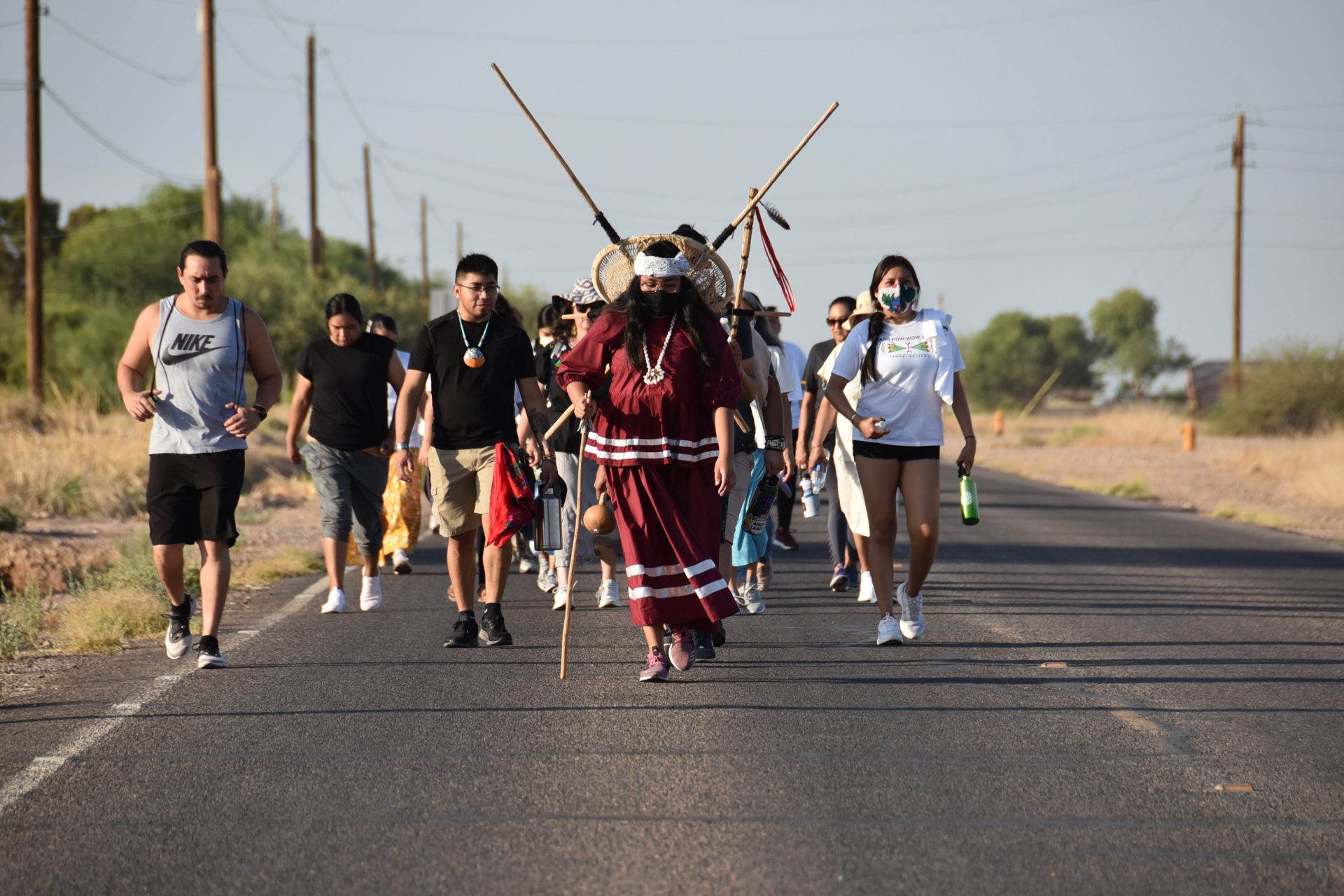
Along the way, the walkers were greeted by several coyotes. There is significance to this, as Debbie reminded the walkers that Royce is from the Coyote Clan. “His clan people knew what was happening and they were excited, so all of them came out to greet the walkers,” she said.
The first stop was at the Two Waters complex. The walkers took a quick break there before heading northwest to Indian School Road, where Johnson led the Kia-ha and the walkers under the Loop 101 freeway in a symbolic walk on the side of the road as local Scottsdale traffic drove by.
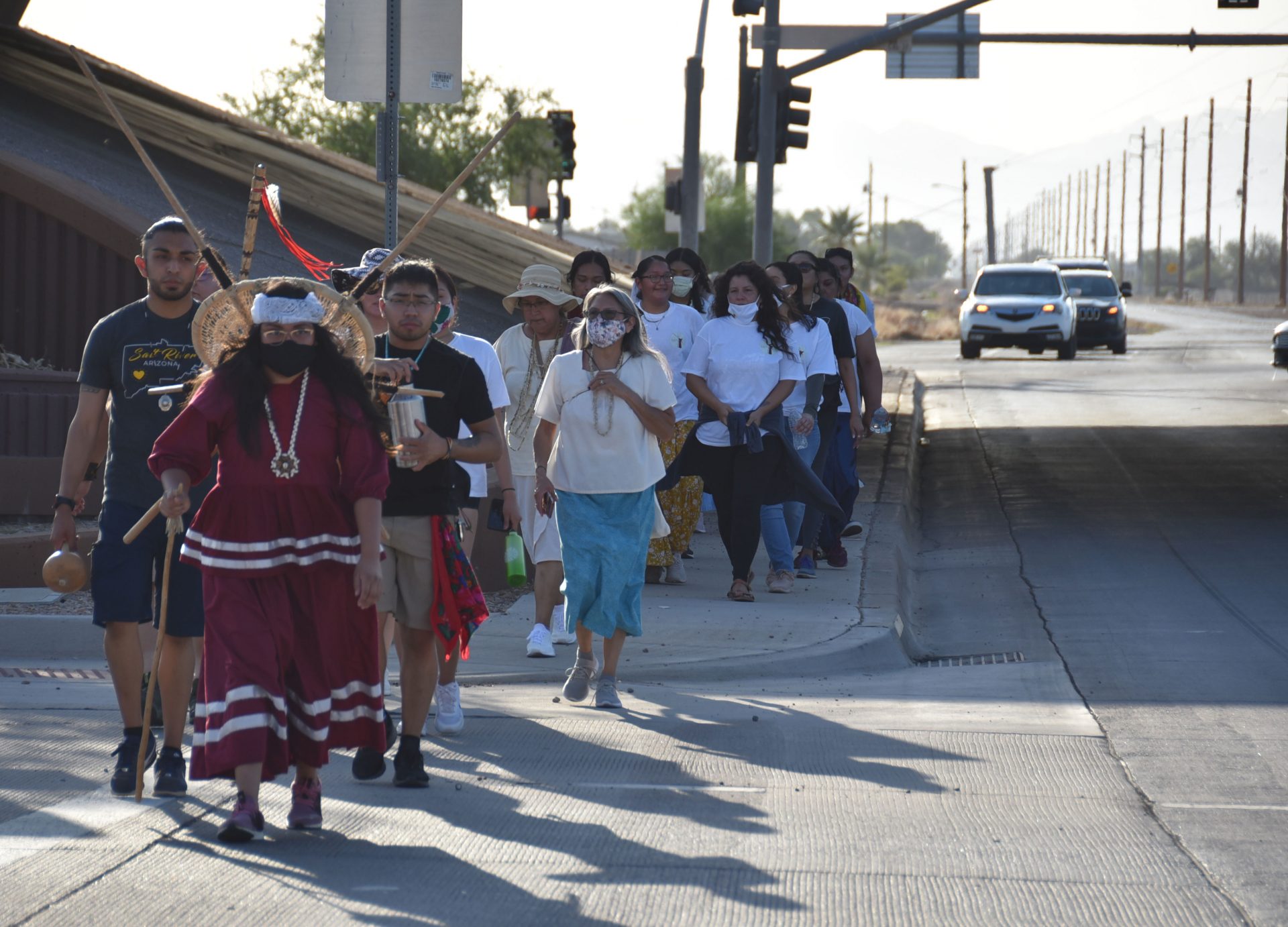
The destination was Mexican Imports, a store historically known as the Basket House, at 3933 N. Brown Ave. in Scottsdale. Scottsdale Mayor David Ortega met the walkers there, and the group walked down Civic Center Park Path to the entrance of the Scottsdale Historical Museum to rest, introduce themselves and share insights about the basket and its meaning.
Leading up to the event, Royce had been talking with young men about the basket and the meaning behind it, and how important it is to understand the plants from this area. This basket is understood to be a female spirit and it is made by the men from agave, willow, saguaro ribs and sotol for the head strap. Royce would sit and talk with young men about that. The young men can learn how to create baskets that are very similar to the ones their great-grandparents would have made in the late 1800s and early 1900s.
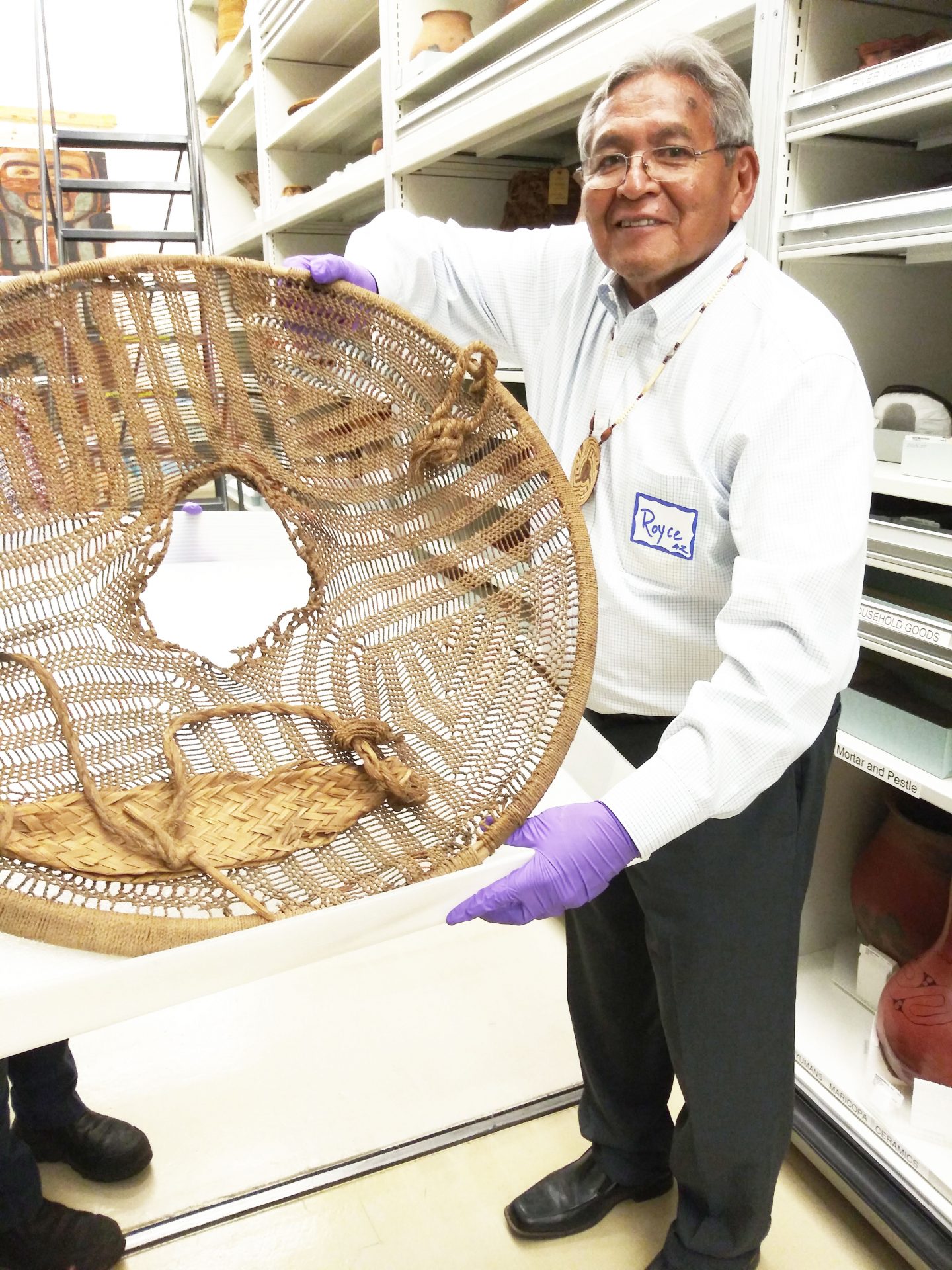
Royce had worked on this basket for the last decade, and when he started, he used manufactured cotton cordage as a way to figure out how to create the design and structure and how to bring it to life. Over time he transitioned from cotton cordage to using the plants themselves to create the structure of the basket, extracting the fibers and processing them.
While he did that, he would often talk to basket makers about the plants and the process of making these specific baskets; but ultimately, he had to learn how to do it himself, because he couldn’t find anybody alive who had been actively making the Kia-ha.
Debbie researched grant opportunities for artwork, which helped fund the project so Royce could focus more of his energy on the basket.
This particular Kia-ha basket carried by Johnson had other smaller baskets and gourds inside of it, which historically would have differed walk to walk, depending on what would be used to trade or sell. The size of the basket would also be different, depending on who would be carrying it.

When Royce’s health began to decline, many people came forward to ask what they could do to support the family. “This one young lady came forward, and she knew from previous conversations that he always wanted the basket to walk from Salt River into downtown Scottsdale to commemorate the walk that his great-grandmother and many other people would have done,” Debbie said. “They would have sold goods there or provided for their families.”
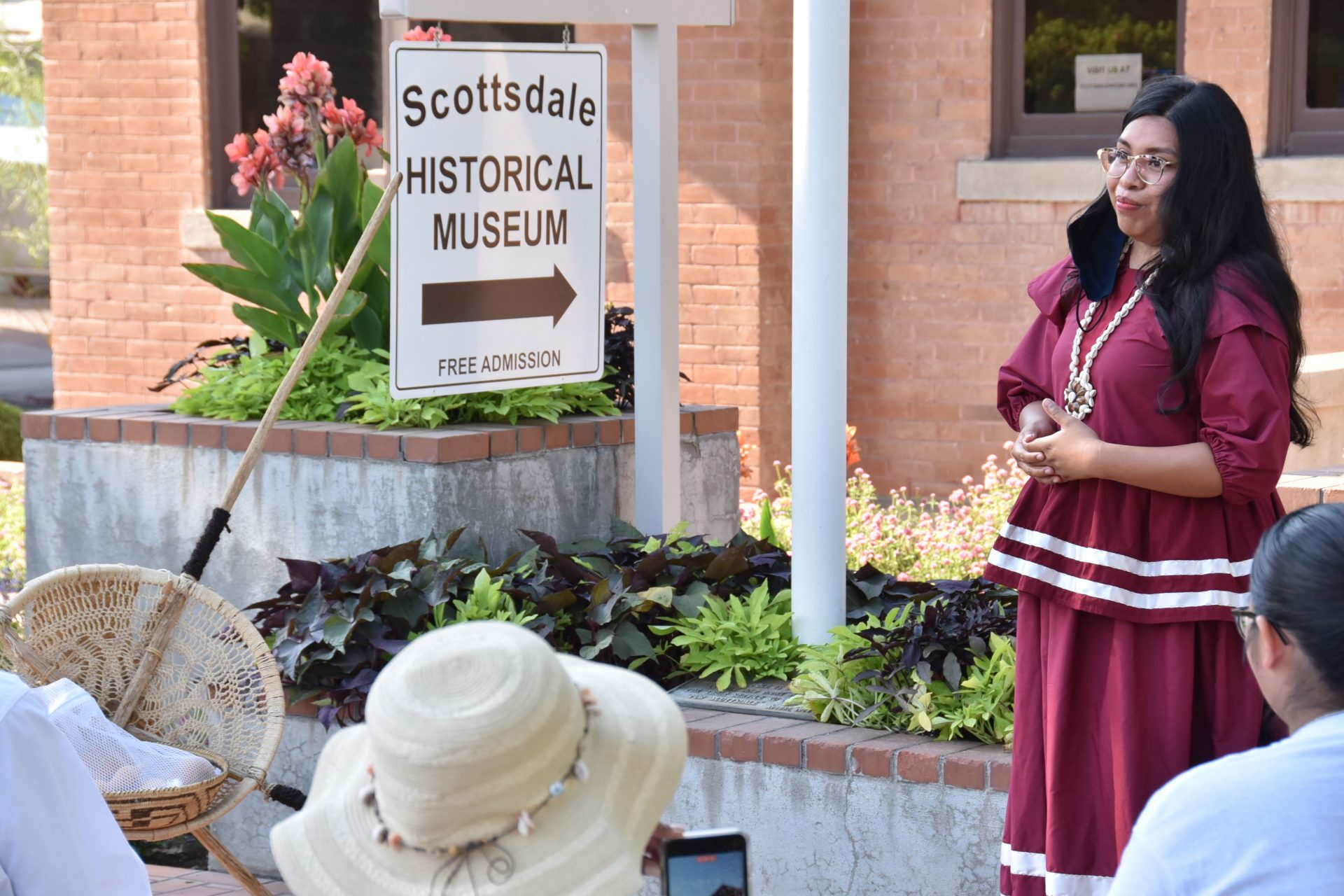
Many of the walkers included students who either had learned about plants from Royce or had participated in harvesting plants.
The significance of the time of day the walk started was that Royce often recognized and waited for the colors of the sky when the sun came over the mountains, which he felt was a sacred time. June 21 was also the day of the summer solstice, which is significant to many tribes.
“[The Kia-ha Walk] reconnects the Community to their identity, to a generation when their grandparents lived. It also strengthens [the Community] and reinforces these values about the plants, teaching one another and carrying on their heritage,” said Debbie. “Exposing children to [these traditions] at an early age and helping them to understand plants ensures that for generations to come, they will have this information.”
